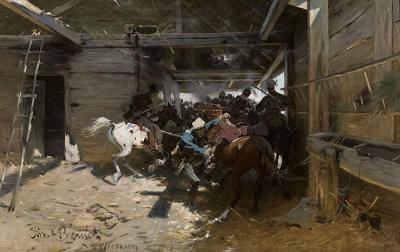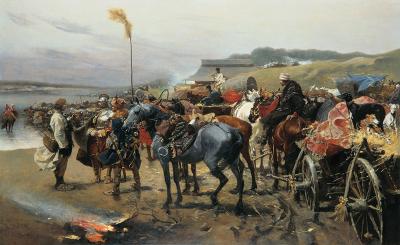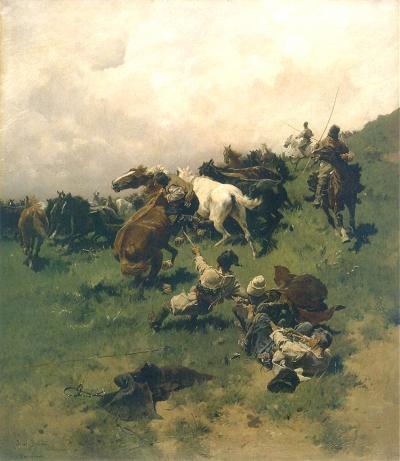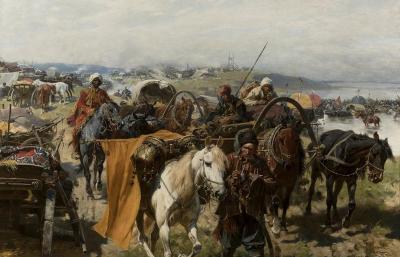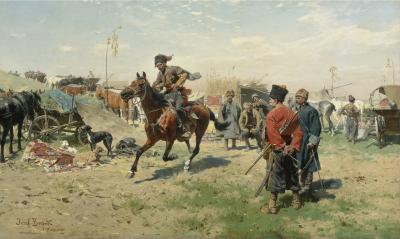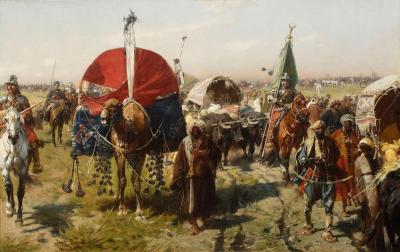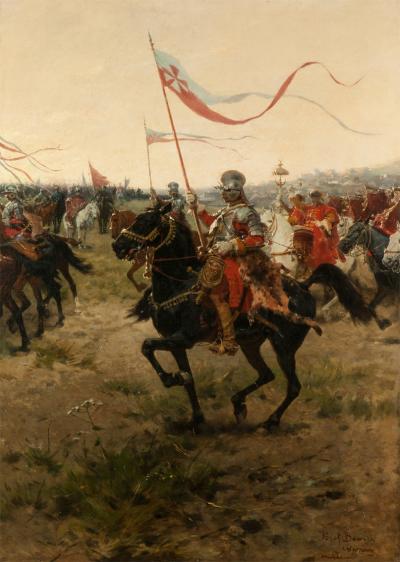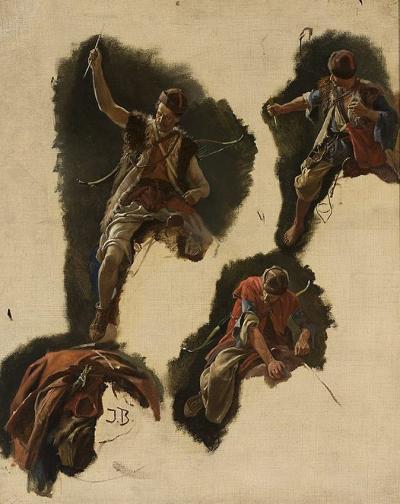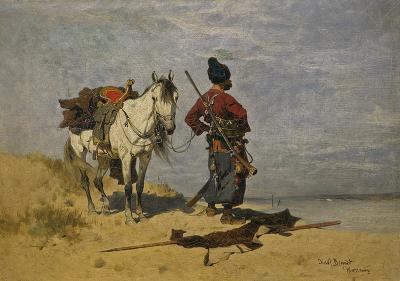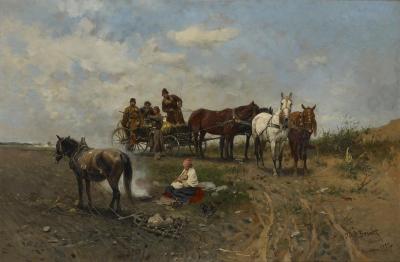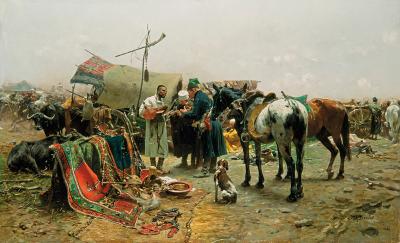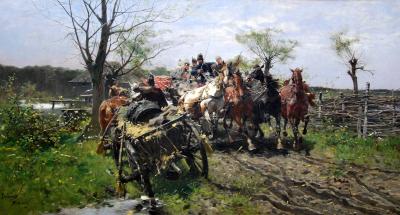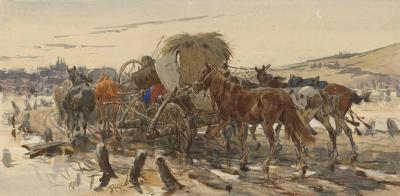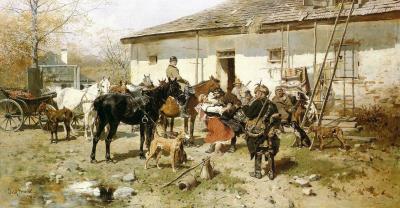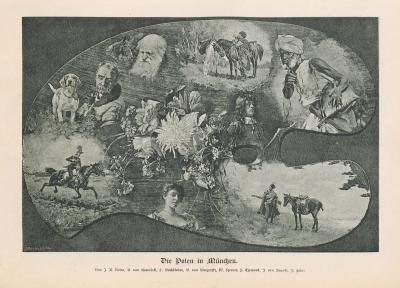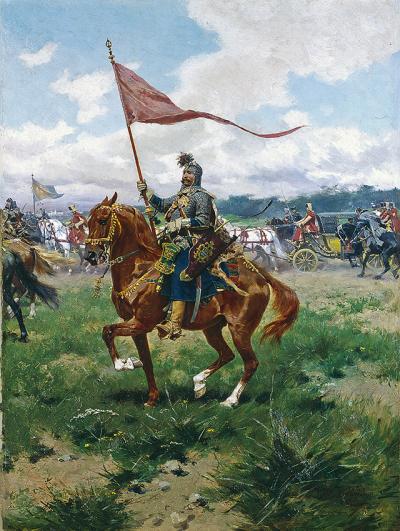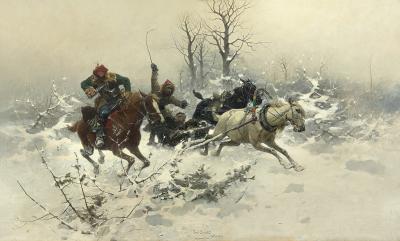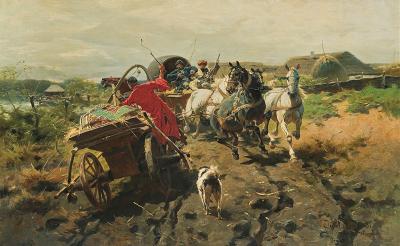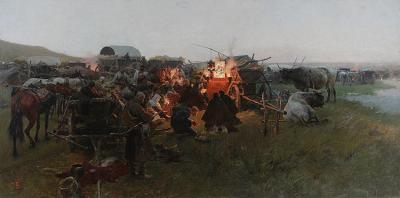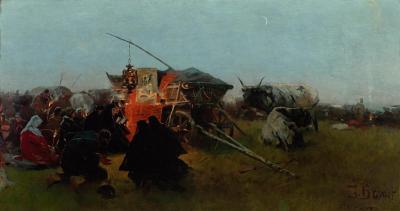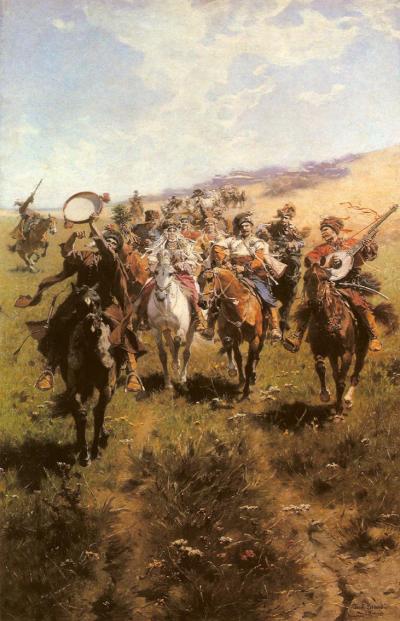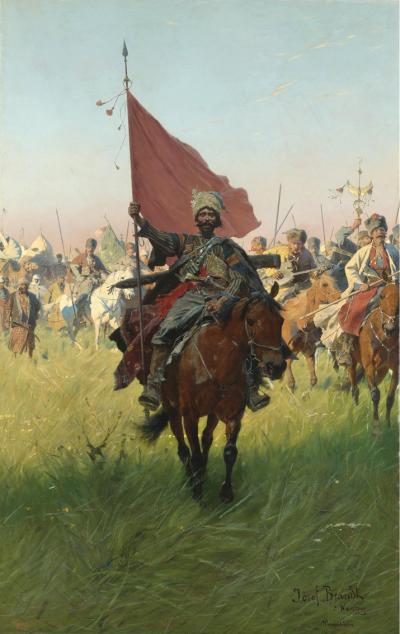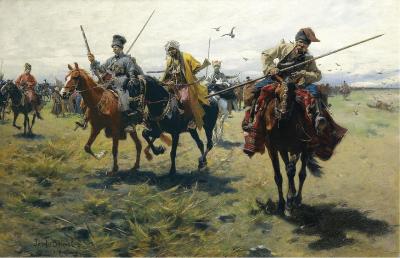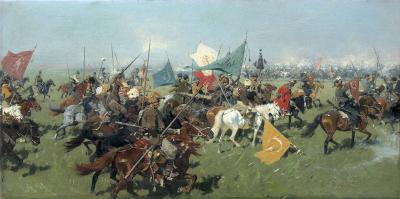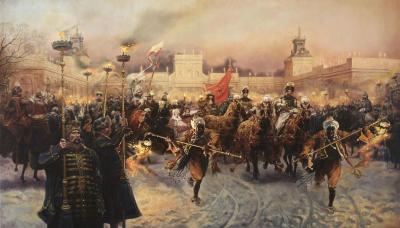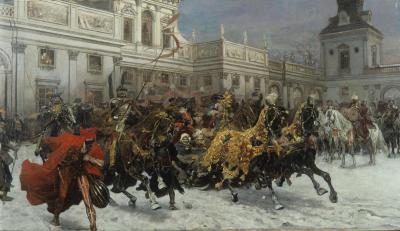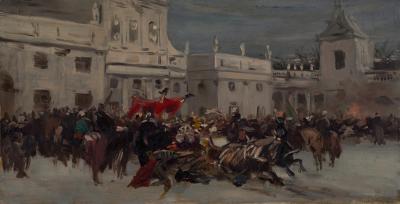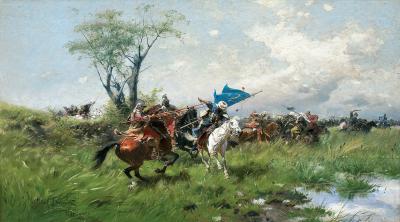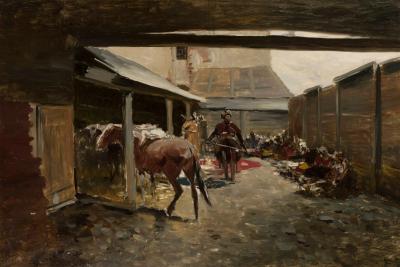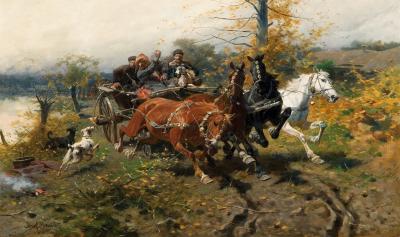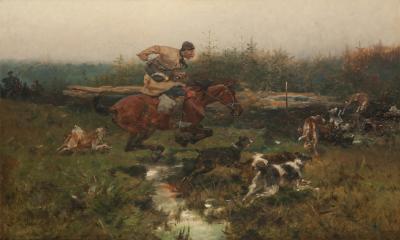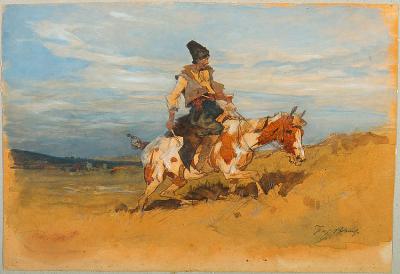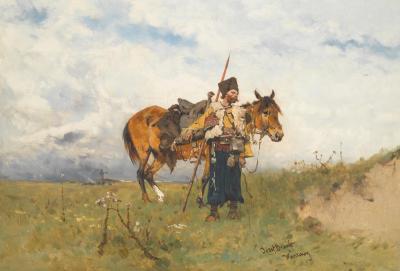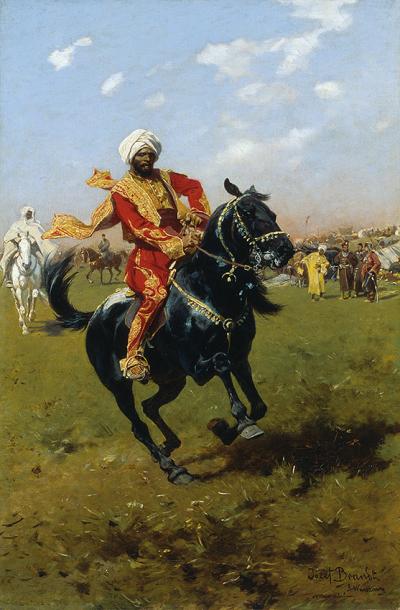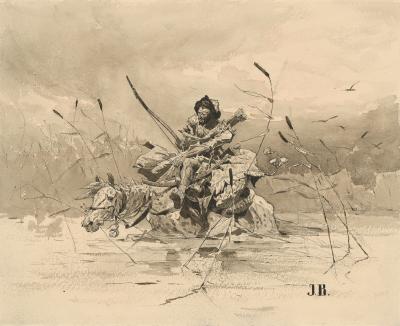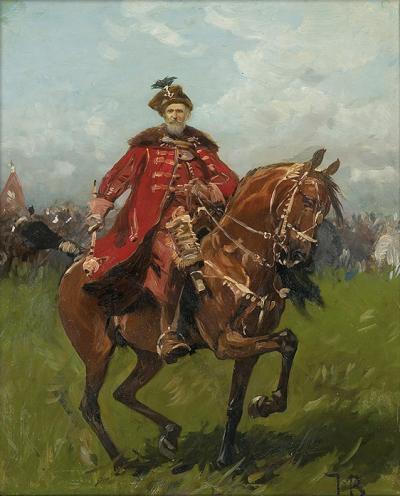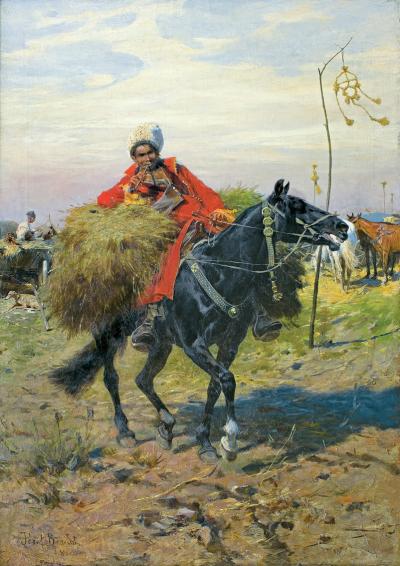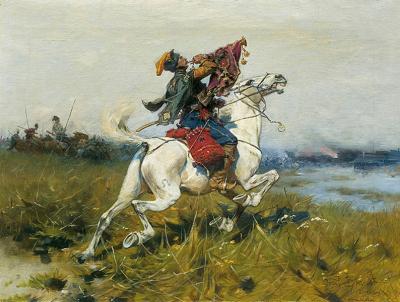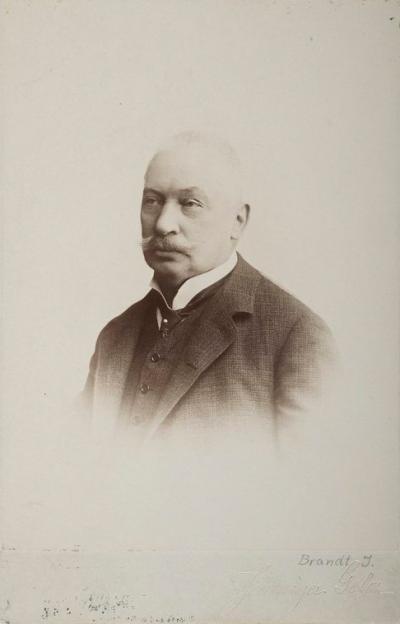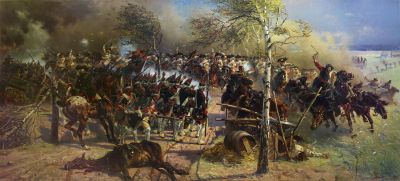Józef Brandt
Mediathek Sorted

In 1867 he painted his first wall-sized battle painting,"The Battle of Chocim" (fig. 9), which also shows a scene from the Polish-Ottoman War, namely the defence of the Polish fortress against the Turks with the support of the Cossack army in September 1621. At the centre of the scene is the Lithuanian commander Jan Karol Chodkiewicz (1560-1621), who, from his white horse, gives the signal for the attack with a raised staff. The coloured costumes of the cavalry soldiers are once more important motifs in the middle of the detailed depiction of the steppe, the turmoil of battle and the gun smoke.The monumental painting was shown at the Paris World Exhibition in the year it was created and moved Friedrich Pecht to compare it with Theodor Horschelt's paintings of a battle in Caucasia: "Brandt's beautiful painterly talent, (he was a pupil of Adam's), was not so completely successful in portraying the physical aspects of the battle of Choczin. On the other hand, there is a rich and captivating imagination in the composition which equally shows his talent for colour".[32]
In1867 Brandt wrote a letter to Helbich describing his first own painting studio at 23 Schillerstraße in Ludwigsvorstadt, which would become one of the most beautiful in Munich.[32] However, in reality the address was that of Adam's studio, where Brandt apparently rented a room. Kossak, who studied with Adam for another year in Munich in 1868/69, described the situation there in a letter to the Warsaw painter Marcin Olszyński (1829-1904). In the first of the three interconnected studios Adam would teach his students, including Aleksander Gierymski (1850-1901), Kossak himself worked in the second with Aleksander's brother, Maksymilian Gierymski (1646-1874), with Brandt in the third.[33] In 1870 Brandt moved to an apartment in the nearby Landwehrstraße, where he used one room as his studio.[34] In 1871 he registered his address in the next street at 13 Schillerstrasse.[35] This was not far from Schwanthalerstrasse, where he moved into a splendid studio three or four years later: this was to be his final studio. In 1869 he exhibited two paintings at the I. International Art Exhibition in the Royal Glass Palace in Munich.[36] There he was awarded a gold medal for the paintings "A Fair in a Small Town in the region of Krakow" and "Episode from the Thirty Years' War: General-in-Chief Strojnowski presents Archduke Leopold I. with the horses of the Palatine Count on the Rhine, captured by the Polish volunteer forces”.[37] In this exhibition Adam exhibited, among other, a "Retreat from Moscow in 1812" and the painting "During the Battle of Solferino 1859".
[31] Friedrich Pecht: Kunst und Kunstindustrie auf der Weltausstellung von 1867. Pariser Briefe, Leipzig 1867, page 132, Digital version: Heidelberger historische Bestände, http://digi.ub.uni-heidelberg.de/diglit/pecht1867/0143?sid=370ce68bd05bb80088aa5dc7b9302c97 (called up on 17.11.2017)
[32] Eliza Ptaszyńska: Dunkle Wälder, nackte Ebenen und Schnee, in: Jednodniówka – Eintagszeitung. Neuausgabe 2008 (see further reading), page XI
[33] Halina Stepień: Franz Adam und sein Schülerkreis in Polen, in: Albrecht Adam und seine Familie, exhibition catalogue Münchner Stadtmuseum 1981/82, page 37 f.
[34] Ptaszyńska 2008 (see note 32), page XI
[35] Adressbuch von München für das Jahr 1871, page 129, Bayerische Staatsbibliothek, Digital version: http://opacplus.bsb-muenchen.de/title/4273829/ft/bsb11038697?page=5 (called up on 17.11.2017)
[36] Catalogue of the I. International Art Exhibition in the Royal Glass Palace in Munich, München 1869, page 32 f.; Digital version: http://daten.digitale-sammlungen.de/0000/bsb00001760/images/index.html?fip=193.174.98.30&id=00001760&seite=1 (called up on 17.11.2017)
[37] “He was awarded the Gold Medal at the Munich International Exhibition in 1869.” Max Jordan: Catalogue of the Royal National Gallery in Berlin, part one, Berlin 1883, page 24, Digital version: https://archive.org/stream/katalogderknigl02jordgoog#page/n351/mode/2up/search/Brandt (called up on 20.11.2017)

















































































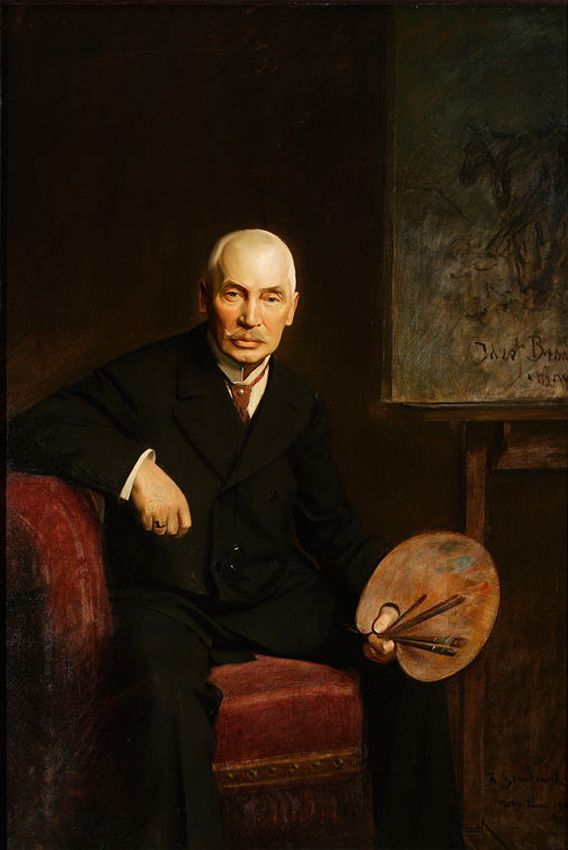
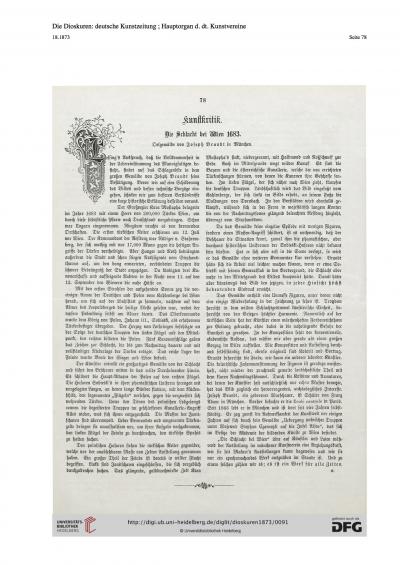
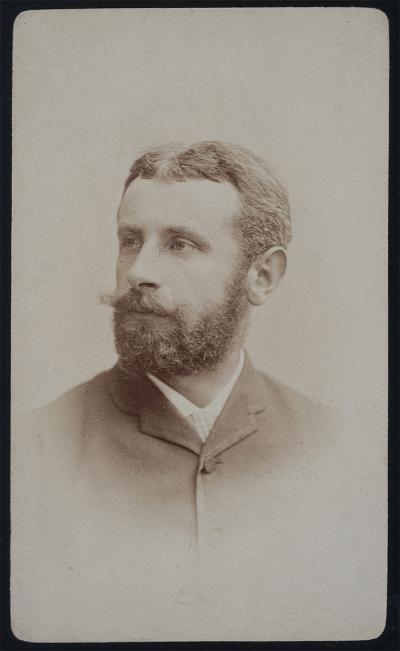
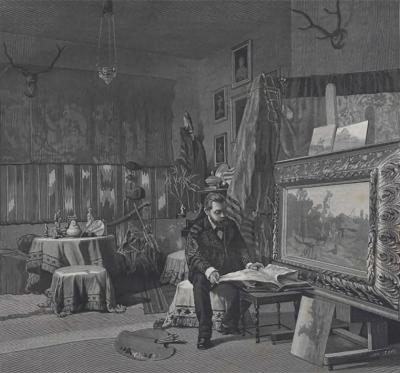
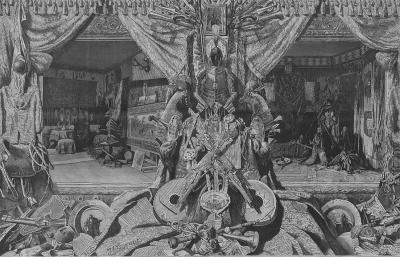
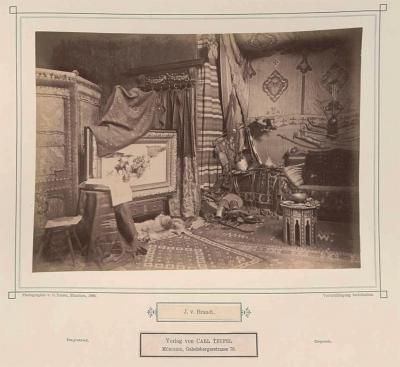
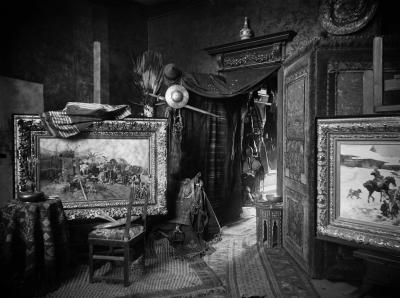
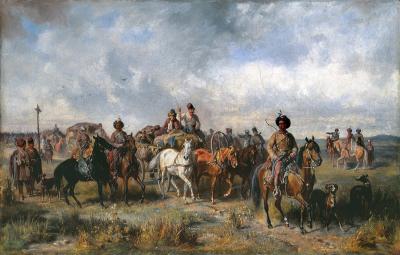
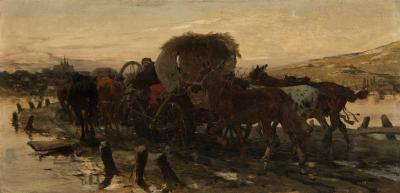
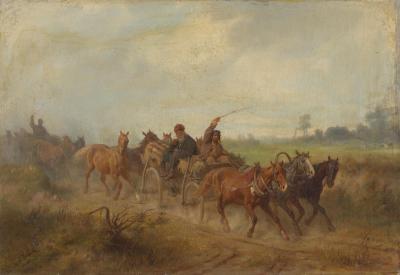
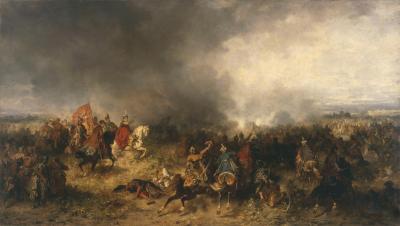
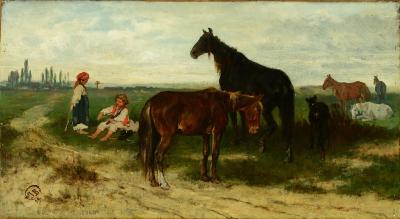
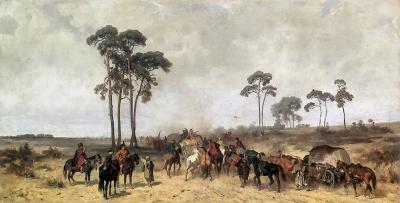
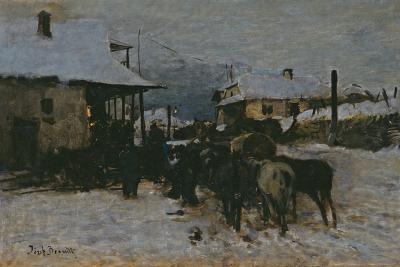
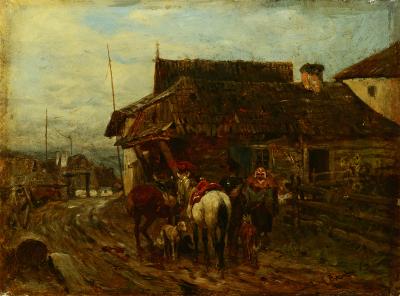
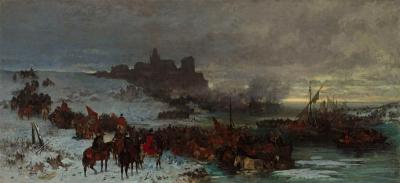
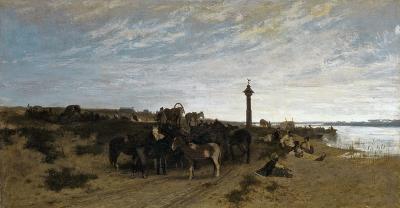
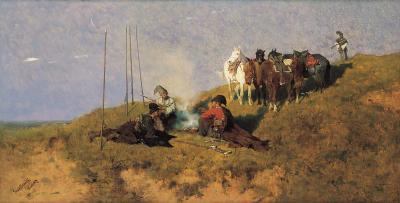
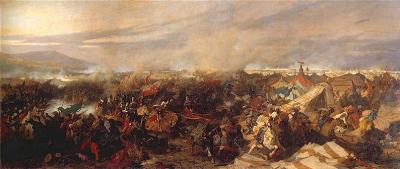
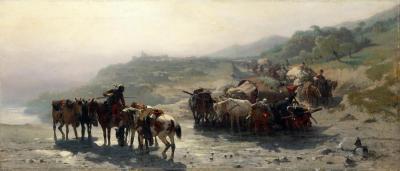
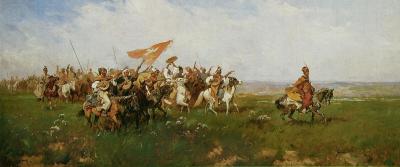
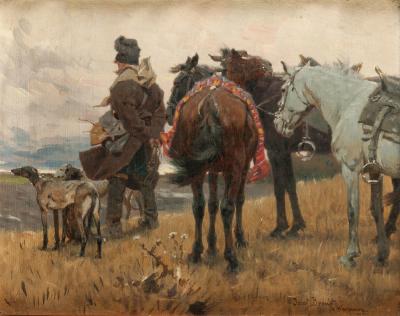
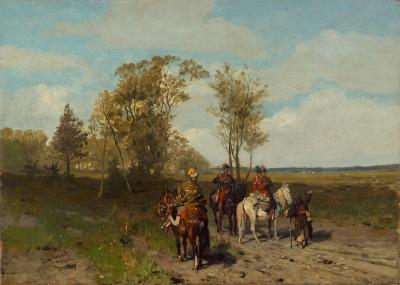
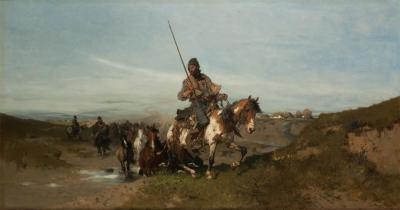
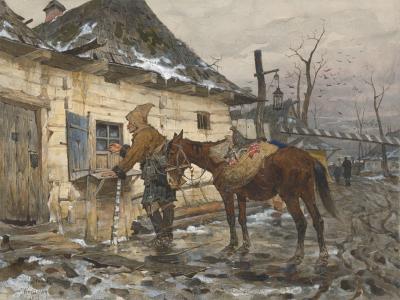
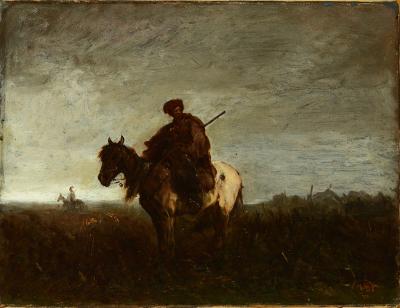
![Fig. 25: The Liberation of Prisoners, 1878 Fig. 25: The Liberation of Prisoners, 1878 - The Liberation of Prisoners [from the hands of Tatars], 1878. Oil on canvas, 179 x 445 cm, National Museum Warsaw/Muzeum Narodowe w Warszawie](/sites/default/files/styles/width_100_tiles/public/assets/images/25_befreiung_der_gefangenen_1878_mnw_cyf.jpg?itok=i5_t7XqM)
